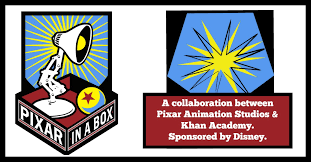Categories
Description
There are few organizations in the world that can claim more expertise when it comes to storytelling than Pixar. The Disney-owned animation studio is known for its ability to consistently create world-class movies with gripping narrative alongside stunning visuals. Now, Pixar is helping others learn the secrets of great storytelling – for free, in partnership with online education provider Khan Academy.
The internet classes include videos, exercises and hands-on activities to guide learners from initial idea to final storyboard. It’s the third season of “Pixar in a Box” on Khan Academy, which first launched on the site in 2015.
Lessons are sourced from Pixar directors and story artists including Inside Out and Up director Pete Docter, Brave director Mark Andrews, Inside Out story artist Domee Shi, and Ratatouille animator Sanjay Patel.
The first lesson, available now, provides an introduction to storytelling as well as help for you to hone your initial creation of things like setting and character. Watch videos and be tasked with practical activities to complete.
Additional lesson installments focus on Character creation, storyboarding, emotional appeal. Pixar’s other Khan Academy courses include topics like virtual cameras, effects and animations.
Trainingmatchmaker.com hopes to hear of and share with aspiring learners even more Pixar lesson releases throughout 2017 and beyond.
Lesson 1: The Art of Story Telling
This topic is an exploration of the storytelling process at Pixar.
What makes a story great? What makes someone a good storyteller? Storytelling is something we all do naturally, starting at a young age, but there’s a difference between good storytelling and great storytelling. In this lesson you’ll hear from Pixar directors and story artists about how they got their start and what stories inspire them, and you’ll begin to think about what kinds of stories you might want to tell.
Introduction to storytelling
Your unique perspective
Activity 1
Your favorite stories
Activity 2
What if…
Activity 3
World & character
Activity 4
Advice
Glossary
Lesson 2. Character
Characters are at the heart of every film Pixar makes; they’re the individuals we follow on the journey of every story. But how does Pixar come up with those characters, make them more than just generic ideas, and really bring them to life? In this lesson you’ll explore how character development drives the storytelling process at Pixar, and you’ll start thinking about creating characters for your own stories.
Introduction to character
Warm up activity
Internal vs. external features
Activity 1
Wants vs. needs
Activity 2
Obstacles
Activity 3
Character arc
Activity 4
Stakes
Activity 5
Advice
Glossary
Lesson 3. Story structure
Every story that is told has a foundation, or structure. For example, one of the most basic story structures is “it begins, something happens, and it ends.” But a story’s structure can be complex, and if used well you’re not even aware of it. In this lesson you’ll learn how Pixar structures their films, and you’ll start laying the foundation for your own stories.
Introduction to structure
Story spine
Activity 1
Theme
Activity 2
Act 1
Activity 3
Act 2
Activity 4
Act 3
Activity 5
Advice
Lesson 4. Visual language
While telling almost any story involves words, characters and structure, making a film involves another aspect of storytelling that Pixar thinks a lot about: visual language. Visual language refers to how imagery is used to convey story ideas or meanings. Perspective, color, and shape can all be used to support a story by guiding the audience to see and feel certain things. In this lesson we introduce you to some basic principles of visual language, and you’ll get to apply those principles to your own stories.
Introduction to visual language
Line
Activity 1
Shape
Activity 2
Space
Activity 3
Motion
Activity 4
Tone
Activity 5
Color
Activity 6
Advice
Lesson 5. Film grammar
Making a movie requires an understanding of the principles and terminology of cinematography, like camera angles, editing, composition, and movement of the camera and characters. This is also known as Film Grammar, and like actual spoken grammar, it is a language used to tell stories in a visual way. Each scene, shot, and frame is considered and crafted using this language. In this lesson we explore the basic Film Grammar used in cinematography and how Pixar approaches its use in storytelling. You will also use these principles to plan shots for your own film.
Introduction to film grammar
Major vs. minor beats
Activity 1
Basic shot types
Activity 2
Extreme shots
Activity 3
Dynamics shots
Activity 4
Storyboarding
Activity 5
Advice
Lesson 6. Storyboard your film
Storyboarding is the act of telling a story through sequential frames using simple drawings; it’s a quick way of working out all the elements of your story, from structure to composition, as you iterate and refine it. In this lesson we put everything together from the previous five lessons to demonstrate how Pixar uses storyboarding in their filmmaking process, and you will have the opportunity to try storyboarding the story you’ve been working on throughout these lessons.

